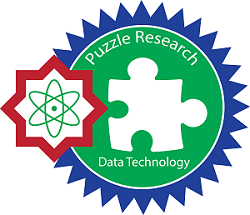Penerapan Teknik Ensemble Learning untuk Klasifikasi Jenis-jenis Anemia
Application of Ensemble Learning Technique for Classification of Anemia Types
DOI:
https://doi.org/10.57152/malcom.v5i3.1721Keywords:
Anemia, Ensemble Learning, Stacking Classifier, Klasifikasi Medis, Random ForestAbstract
Anemia merupakan kondisi medis yang memerlukan diagnosis yang akurat untuk penanganan yang efektif. Penelitian ini mengeksplorasi penerapan teknik ensemble learning, khususnya stacking classifier, untuk klasifikasi jenis-jenis anemia. Teknik ini menggabungkan tiga model dasar: Random Forest, K-Nearest Neighbors (KNN), dan Gradient Boosting, dengan Logistic Regression sebagai estimator akhir. Data medis yang digunakan melibatkan berbagai fitur hematologi, dan preprocessing meliputi pembersihan, normalisasi, serta pembagian data. Evaluasi model dilakukan menggunakan cross-validation dengan 10 lipatan. Hasil penelitian menunjukkan bahwa stacking classifier mencapai akurasi keseluruhan 98%, dengan precision dan recall yang sangat baik di sebagian besar kelas. Kelas-kelas seperti Iron deficiency anemia, Leukemia, dan Other microcytic anemia menunjukkan precision 100%, sementara beberapa kelas dengan sampel kecil mengalami recall yang lebih rendah. Secara keseluruhan, model ini efektif dalam mengklasifikasikan jenis-jenis anemia dengan akurasi tinggi dan dapat diadaptasi untuk meningkatkan diagnosis medis lebih lanjut. Penelitian ini menyoroti potensi teknik ensemble dalam memperbaiki performa klasifikasi dan menyarankan eksplorasi lebih lanjut pada data dengan distribusi yang tidak merata
Downloads
References
R. R. Muradova, “Modern approaches to the pharmacotherapy of anemia,” International journal of medical sciences and clinical research, vol. 4, no. 6, pp. 89–94, 2024, doi: 10.37547/ijmscr/volume04issue06-14.
M. L. Smith, “Anemia: Evaluation of Suspected Anemia,” FP Essent, vol. 530, pp. 7–11, 2023.
V. Yu. Pavlova and E. V Kazakovtseva, “Anemia of chronic diseases,” Vestnik Volgogradskogo gosudarstvennogo medicinskogo universiteta, 2024, doi: 10.19163/1994-9480-2024-21-2-21-28.
R. Allende, L. D. de Entresotos, and S. C. Diez, “Anaemia of chronic diseases: Pathophysiology, diagnosis and treatment.,” Med Clin (Barc), vol. 156, no. 5, pp. 235–242, 2021, doi: 10.1016/J.MEDCLE.2020.07.022.
L.-Y. Wu and S.-S. Weng, “Ensemble Learning Models for Food Safety Risk Prediction,” Sustainability, vol. 13, no. 21, p. 12291, 2021, doi: 10.3390/SU132112291.
A. Das, K. Jain, D. Majumder, and R. Karmakar, “An Ensemble Learning Paradigm for Efficient Stock Market Predictions,” pp. 1–7, 2024, doi: 10.1109/icccnt61001.2024.10726086.
Z. Khan et al., “Ensemble of optimal trees, random forest and random projection ensemble classification,” Advanced Data Analysis and Classification, vol. 14, no. 1, pp. 97–116, 2020, doi: 10.1007/S11634-019-00364-9.
M. Maindola et al., “Utilizing Random Forests for High-Accuracy Classification in Medical Diagnostics,” pp. 1679–1685, 2024, doi: 10.1109/ic3i61595.2024.10828609.
G. F. C. de Castro and R. Tinós, “K-Nearest Neighbors based on the Nk Interaction Graph,” 2022, doi: 10.5753/eniac.2022.227174.
A. M. El-Boghdady, S. Kishk, M. M. Ashour, and E. AbdElhalim, “Machine-learning based stacked ensemble model for accurate multi classification of CBC Anemia,” 2023, doi: 10.58491/2735-4202.3144.
Z. Faradila, A. Homaidi, and J. Prasetyo, “Classification of Anaemia Status Using The K-Nearest Neighbor Algorithm,” G-Tech, vol. 9, no. 1, pp. 436–444, 2025, doi: 10.70609/gtech.v9i1.6377.
T. R. Noviandy, G. M. Idroes, R. Suhendra, T. K. Bakri, and R. Idroes, “Advanced Anemia Classification Using Comprehensive Hematological Profiles and Explainable Machine Learning Approaches,” Infolitika Journal of Data Science, vol. 2, no. 2, pp. 72–81, 2024, doi: 10.60084/ijds.v2i2.237.
C. Gong, Y. Lin, J. Cao, and J. Wang, “Research on Enterprise Risk Decision Support System Optimization based on Ensemble Machine Learning,” 2024, doi: 10.20944/preprints202410.0948.v1.
G. Ghaly, N. T. Amanda, R. Ardhani, B. Sartono, and A. R. Firdawanti, “Analisis kinerja model stacking berbasis random forest dan svm dalam klasifikasi rumah tangga berdasarkan garis kemiskinan makanan di provinsi jawa barat,” Jurnal Lebesgue, vol. 5, no. 3, pp. 2244–2265, 2024, doi: 10.46306/lb.v5i3.856.
Y. Pamungkas, R. D. Indriani, and Z. B. Syulthoni, “Implementation of Synthetic Minority Over-Sampling Technique in the Anaemia Classification Using the LSTM and Bi-LSTM Algorithms,” pp. 359–364, 2024, doi: 10.1109/eecsi63442.2024.10776106.
C. Gong, Y. Lin, J. Cao, and J. Wang, “Research on Enterprise Risk Decision Support System Optimization based on Ensemble Machine Learning,” 2024, doi: 10.20944/preprints202410.0948.v1.
P. Gupta, N. K. Sehgal, and J. M. Acken, “Practical Aspects in Machine Learning,” Synthesis lectures on engineering, science, and technology, pp. 281–330, 2024, doi: 10.1007/978-3-031-59170-9_9.
K. H. Erian, P. H. Regalado, and J. M. Conrad, “Missing data handling for machine learning models,” vol. 10, no. 2, pp. 123–132, 2021, doi: 10.11591/IJRA.V10I2.PP123-132.
D. Ozsahin, M. T. Mustapha, A. S. Mubarak, Z. S. Ameen, and B. Uzun, “Impact of feature scaling on machine learning models for the diagnosis of diabetes,” 2022 International Conference on Artificial Intelligence in Everything (AIE), pp. 87–94, 2022, doi: 10.1109/aie57029.2022.00024.
V. R. Joseph and A. Vakayil, “SPlit: An Optimal Method for Data Splitting,” arXiv: Machine Learning, 2020, doi: 10.1080/00401706.2021.1921037.
A. N. Sadrabadi, S. M. Znjirchi, H. Z. Ahmadi, and A. Hajimoradi, “An optimized K-Nearest Neighbor algorithm based on Dynamic Distance approach,” 2020, doi: 10.1109/ICSPIS51611.2020.9349582.
H. Chen, “Understanding Gradient Boosting Classifier: Training, Prediction, and the Role of b3_j,” 2024, doi: 10.48550/arxiv.2410.05623.
Downloads
Published
How to Cite
Issue
Section
License
Copyright (c) 2025 Arjuna Priandika, Auliya Rahman Isnain

This work is licensed under a Creative Commons Attribution-ShareAlike 4.0 International License.
Copyright © by Author; Published by Institut Riset dan Publikasi Indonesia (IRPI)
This Indonesian Journal of Machine Learning and Computer Science is licensed under a Creative Commons Attribution-ShareAlike 4.0 International License.




















